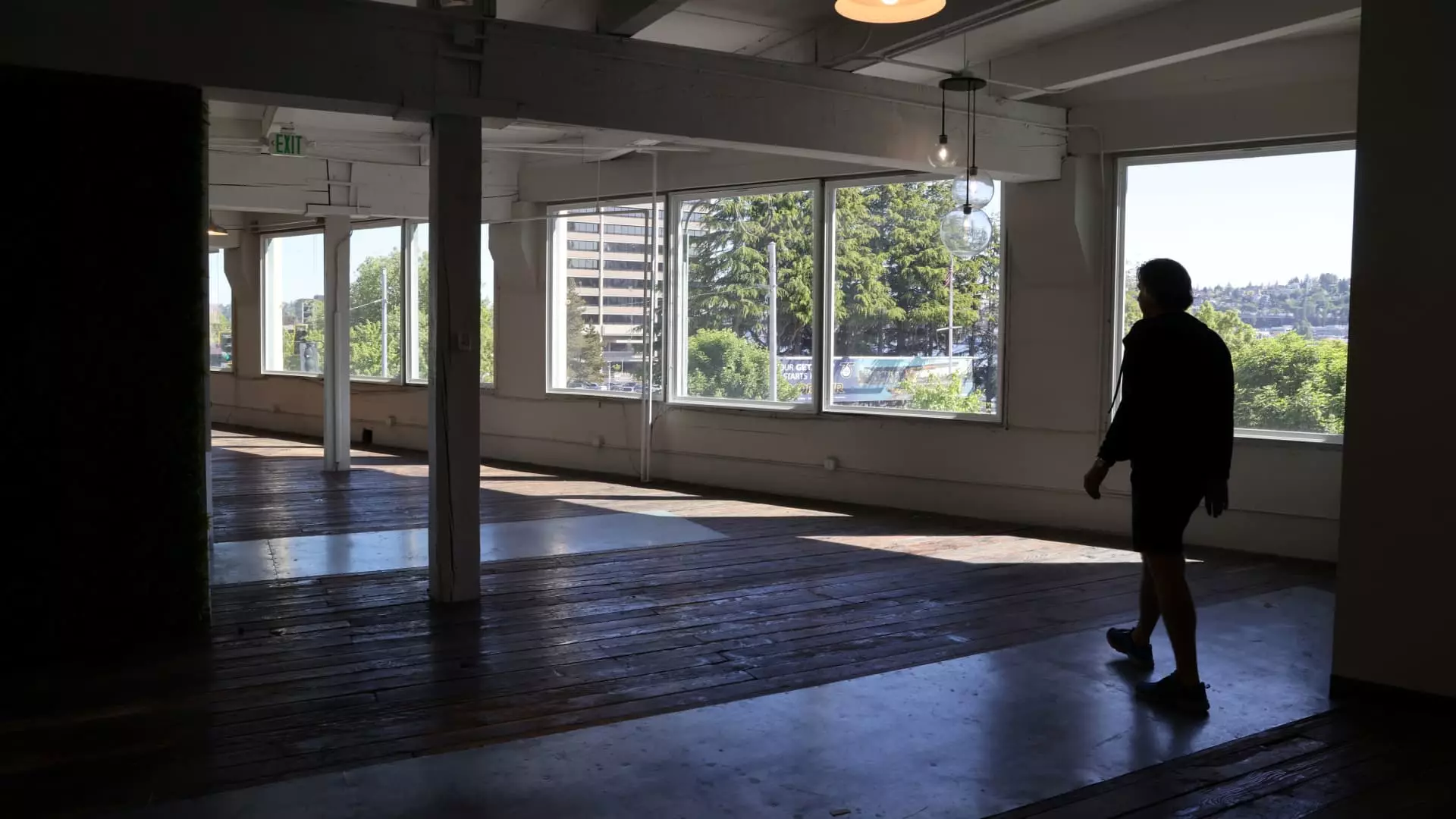The U.S. office market stands on the precipice of a significant transformation, one that could redefine urban landscapes and the nature of work itself. After enduring years of turmoil, largely exacerbated by the pandemic, we are witnessing an exciting pivot: for the first time in over two decades, the amount of office space being demolished or repurposed is outpacing new construction. This seismic shift, documented by CBRE Group, reveals a reluctant acceptance of the reality that many pre-existing workspaces are no longer suitable for the modern workforce, which has increasingly soaked up the allure of flexible and remote work.
There is a certain urgency in this transformation. As more properties bow out of the office rental game, the entire sector is forced to confront an uncomfortable truth—many traditional office spaces are outdated and inefficient. Instead of lamenting the change, we must embrace this opportunity to rethink how urban environments can serve us best. The burgeoning trend of office conversions signifies that we are not merely eliminating square footage but making room for vibrant new uses, thereby injecting life back into our cities.
The Data Telling a Transformative Story
According to CBRE, an estimated 23.3 million square feet of office space across the largest U.S. markets will be scheduled for either demolition or conversion by the close of this year. In stark contrast, only around 12.7 million square feet of new office space is anticipated to be completed. This stark imbalance is not merely a statistic; it is a clarion call to developers, city planners, and policymakers to rethink our approach to commercial real estate.
While a vacancy rate floating at around 19% seems grim, the recent rise in net absorption (the difference between newly occupied space and vacated space) demonstrates recovery signs. The 18% uptick in office-leasing activity during the initial quarter of the year is promising. However, we must be cautious; these statistics don’t simply suggest that employers are eager to fill office spaces. Rather, they may reflect a reluctant acceptance by employees who feel cornered by a tightening job market, leading them to comply with workplace mandates despite their inclination to retain the work-from-home flexibility that had previously defined their professional lives.
The New Realities of Office Space
Jessica Morin, CBRE’s Americas head of office research, highlights an important aspect of this transformation: the discourse surrounding obsolete office spaces. “Obsolete space is being removed from the market in favor of the highest and best use,” she states, revealing a critical understanding that efficient use of real estate will ultimately enhance neighborhood vitality. As we embark on this transformational journey, we must consider the implications for urban living and how adaptive reuse strategies could breathe new life into vacant buildings.
Among the most exciting aspects of this trend are the conversions of office spaces into multifamily homes. Since 2016, this innovative approach has already birthed approximately 33,000 new apartments and condos, thereby addressing some of the deep-seated housing crises plaguing our urban environments. However, while the potential for creating additional residential units from unused offices is promising, we must be vigilant about the dwindling pool of suitable properties for conversion, along with the high construction and financing costs that act as deterrents.
Embracing Change, Yet Navigating Challenges
As this reinvention unfolds, optimism must be anchored in realism. The conversion trend indeed faces headwinds; not only are there limitations on which buildings can feasibly undergo conversion, but the related costs remain formidable as well. Industries that leverage the office market’s evolution must be prepared to adapt to these emerging challenges if they wish to sustain growth.
The journey toward a redefined office market is not just about tackling a numerical imbalance; it’s about communal reinvention. The successful transformation of our office spaces is anchored in two interrelated concepts: innovative thinking and adaptability. If we embrace this moment not just as a crisis but as a call to action, we have the power to redefine our workspaces and, by extension, our urban experiences for generations to come.


Leave a Reply